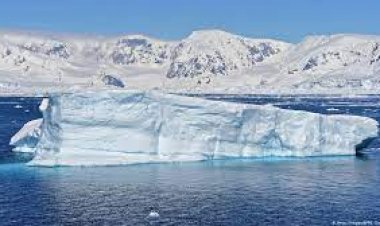The largest iceberg broke apart from Antarctica, which is called the ice reserve. This broken iceberg is 170 kilometres long and about 25 kilometres wide. This giant piece is broken by the Ronne Ice Self situated in the western part of Antarctica.
A huge mountain of ice has broken apart from Antarctica, called the London Ice Mine. It has been reported as the world's largest iceberg. This iceberg is 170 kilometres long and is about 25 kilometres wide. The satellite pictures of the European Space Agency reveal that this giant ice piece has been broken by the Ronne Ice Shelf, situated in the western part of Antarctica. There is an atmosphere of panic all around the world due to the breaking of this iceberg.
After breaking the iceberg, Weddell is now swimming freely in the sea. The whole size of this giant iceberg is 4320 kilometres. It has now become the largest iceberg in the world and is named A-76. The image of the rupture of this iceberg has been drawn by the European Union satellite Copernicus Sentinel. This satellite monitors the Earth's polar terrain. The Antarctic Survey Group of Britain first disclosed about the break-up of the iceberg.
According to the National Snow and Ice Data Center, the water level can rise up to 200 feet when the ice melts, the iceberg will not directly increase the sea level, but may increase the water level indirectly. Apart from this, it can also slow down the speed of glaciers and the currents of ice. The Center informed that Antarctica is warming faster than other parts of the Earth. In Antarctica there is so much water in the form of ice, which, when melted, the sea level can stand up to 200 feet worldwide.
Scientists trust that the A-76 is broken not by climate change but by natural causes. British Antarctic Survey Team scientist Laura Gerrish tweeted that both the A-76 and A-74 have been separated because of natural causes after the completion of their period. He said that it is required to keep an eye on the speed of the breaking of the icebergs, but their breakdown is expected now. According to Nature magazine, after the year 1880, the average sea level has increased by 9 inches. Its One-third water comes from melting ice in Greenland and Antarctica.




The Brief. Sign up to receive the top stories you need to know right now.